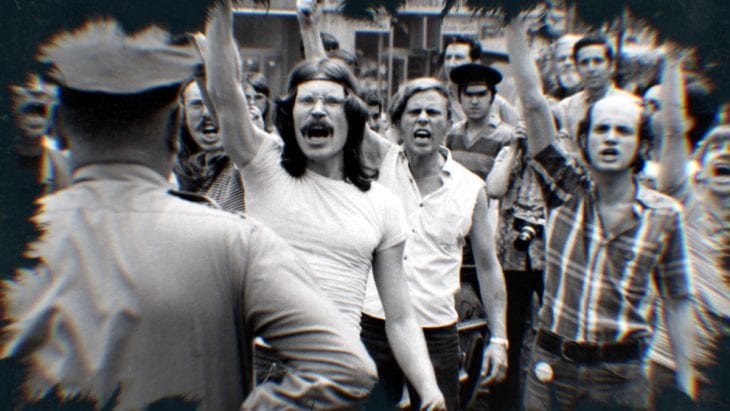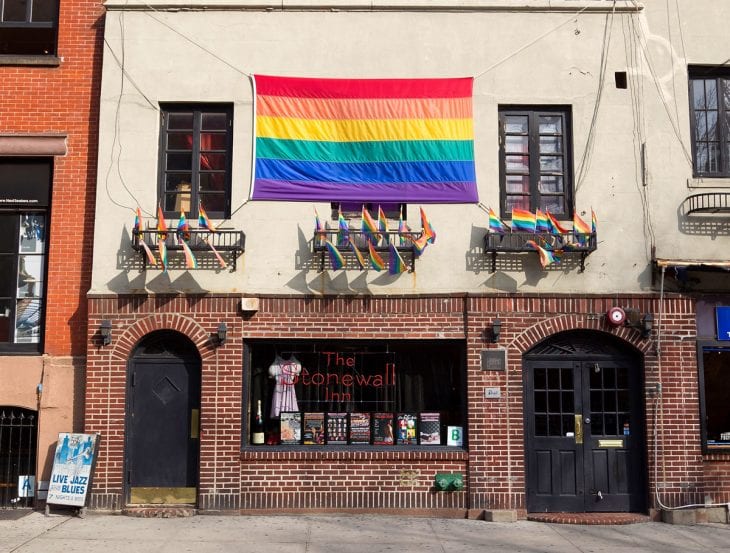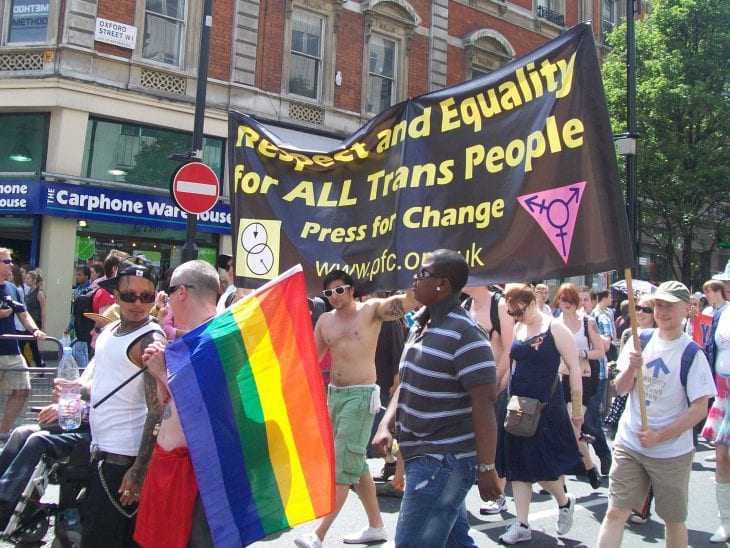President Obama issued a proclamation at the end of May stating that June is officially Lesbian, Gay, Bisexual, and Transgender Pride Month, but June has unofficially been Pride Month for the LGBT community for decades. We place it in June, and our pride parades at the end of June, to mark the anniversary of the Stonewall Rebellion. This year will be 45 years.

Source: www.history.com
The fact that our President is so markedly in support of LGBT rights is historic, but what really makes it remarkable to me is that he and his administration have been vocal lately about transgender rights. Sex reassignment surgery can now be covered on Medicare. Chuck Hagel is now “open” to reconsidering the military’s ban on transgender service members. This is all part of a very fast, sweeping change in our culture’s conversation about transgender people, marked just since the beginning of this month, for example, by Laverne Cox’s appearance on the cover of TIME and a viral video telling the story of a family raising a transgender child.
This feels very sudden to me, not least because of the very divisive legacy of Stonewall in the LGBT community. Here’s what happened: for the better part of the twentieth century, there were laws in place in most of America that prohibited dressing in the attire of the “other” gender (in quotes because that assumes that there’s only two), the rationale being that transpeople and drag queens and kings were posing a public safety hazard by being deceitful in their appearance. In New York City in the 60s, there was a campaign to rid the city of gay bars. This was accomplished via police raids that were performed under spurious charges of solicitation against gays and charges against drag queens and transpeople who frequented the bars, on the grounds that they were violating the dress laws.
Of course, this was New York City, so the raids would occur, the cops would be bribed (because of the legal risk, many of the bars were mafia-run), and most often the bars would reopen within a few days. But the raids kept happening, over and over. Everyone knew business would keep going, so it boiled down to being a method of harassment and extortion of a marginalized community on the part of the NYPD.

Source: www.biography.com
On June 28, 1969, the patrons of the Stonewall Inn got sick of it and started talking back, throwing coins at the cops and taunting them for being corrupt. But eventually the mood turned from taunting to outright physical violence (badass trans activist Sylvia Rivera claims she threw the beer bottle that escalated the protest into a riot), the cops barricaded themselves inside the bar while the patrons tried to ram the door down with an uprooted parking meter, and mayhem ensued for four nights straight.
What got whitewashed out of the history of the Stonewall Rebellion in popular memory was the fact that drag queens and transpeople were on the front lines of the rebellion along with the bar’s gay and lesbian patrons, and that the fact that the very fact of being trans and presenting as such in public was against the law accounted for most of the basis of the police raids that sparked the rebellion. It wasn’t long after Stonewall that it became clear that the Gay Liberation Front that was founded in its wake was dominated by white, cisgendered males, and so lesbian activists broke off to work in the women’s movement, and trans activists formed organizations like STAR House, Transvestites and Transsexuals, Transsexuals Anonymous, and the Queens’ Liberation Front.

Source: Wikipedia
It didn’t take long for the gay rights movement to throw its trans brothers and sisters under the bus in an effort to win over the hetero mainstream. It was easier for gays and lesbians to claim that their community and the community of heterosexuals had a common enemy in trans people than to insist that human sexuality and gender identity and expression is mind-blowingly diverse and everyone needs to just get over it. This manifested itself in ugly claims by bigots like Janice Raymond that transwomen were “raping” feminism by wanting to be included in the movement in the 1970s, or by Elizabeth Birch claiming that trans inclusion would be part of the Human Rights Campaign’s policy “over her dead body” while she was acting as its executive director in the 1990s.
I’m not trying to incriminate the gay and lesbian communities wholesale, just to point out the fact that trans activists fought hard for gay rights and for trans rights for a long, long time, and they were the people most likely to take a beating for it or die for it without thanks, recognition, or validation even from the communities that were closest to them. Drag queens and transpeople put their bodies on the line at Stonewall, and they put their public reputations on the line by being vocal and, for that matter, by just existing. Marsha P. Johnson’s death was ruled a suicide by the police, while a vigilante campaign found that it was likelier murder. Dr. Essay Anne Vanderbilt’s gender identity was put on public display for absolutely no reason during the course of trying to discredit her golf putters (as if being trans is deceitful and therefore evidence of professional deceit), and she killed herself over it. Kevin Williamson tried to smear Laverne Cox this week and — it finally happened — he, the perpetrator of transphobic hatred, was roundly scathed for it.
This is a very new part of our cultural conversation. The majority of people are still going to see transpeople as perverse and delusional, denying what they “actually” are (people are so happy to tell other people what they “actually” are, aren’t they?). So while I’m incredibly pumped that more people are starting to jump on the trans inclusion bandwagon, this feels like the right time to talk about where we, as a society, have been for the last 45 years.
Original by: Rebecca Vipond Brink
